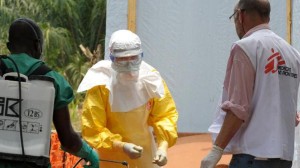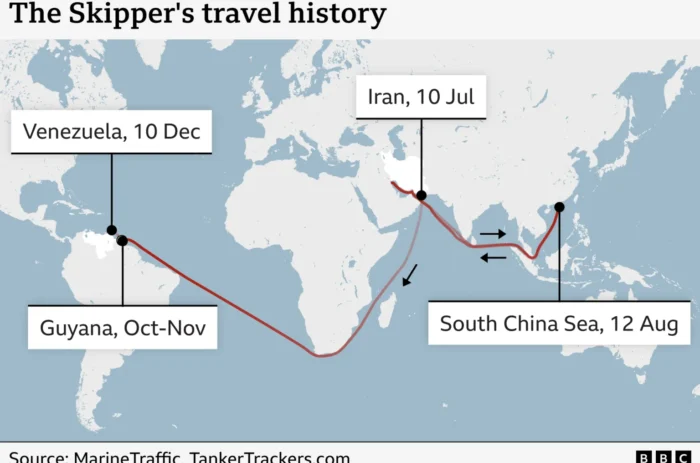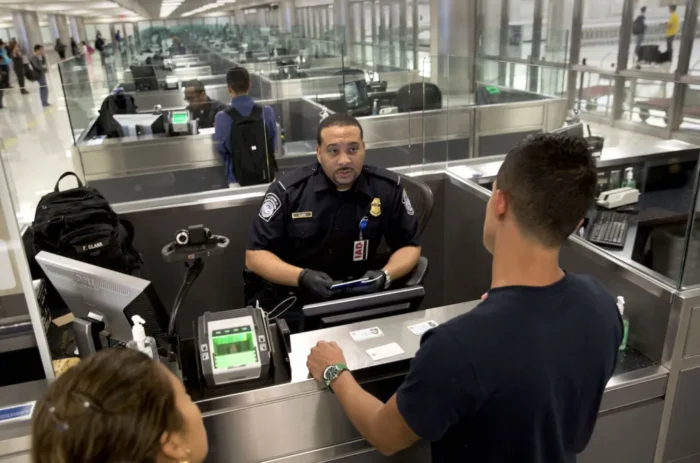redo Jump to...
print Print...
 (by Jonathan Fowler, Agence France-Presse at YahooNews) Geneva – West Africa’s Ebola unprecedented outbreak is among the “most challenging” for health workers since the deadly disease emerged elsewhere in Africa four decades ago as the suspected death toll topped 100, the World Health Organization (WHO) said Tuesday.
(by Jonathan Fowler, Agence France-Presse at YahooNews) Geneva – West Africa’s Ebola unprecedented outbreak is among the “most challenging” for health workers since the deadly disease emerged elsewhere in Africa four decades ago as the suspected death toll topped 100, the World Health Organization (WHO) said Tuesday.
Keiji Fukuda, assistant director-general of the World Health Organization (WHO), said the agency was concerned about the spread of the virus from its epicentre in the forests of southern Guinea.
 “We have not had an Ebola outbreak in this part of Africa before,” said Fukuda, whose agency has rushed scores of aid workers to the region to contain the epidemic. “This is one of the most challenging Ebola outbreaks we have ever faced,” he said.
“We have not had an Ebola outbreak in this part of Africa before,” said Fukuda, whose agency has rushed scores of aid workers to the region to contain the epidemic. “This is one of the most challenging Ebola outbreaks we have ever faced,” he said.
The most severe strains have had a 90 percent fatality rate, and there is no vaccine, cure or specific treatment.
The outbreak has sparked fear in Guinea, where a mob in the south of the country last week attacked international aid workers, who they blame for bringing the hemorrhagic fever.
“It’s absolutely critical to get out as much accurate information as possible to communities and the countries affected, to reduce the rumors, so that people have facts to work with,” Fukuda said.
“Ebola is clearly a severe disease. It’s an infection with a high fatality rate. But it’s also an infection that can be controlled,” he said.
According to fresh WHO figures released Tuesday, there have been 157 suspected cases in Guinea, 101 of them fatal. Of those, 67 have been confirmed as Ebola victims by laboratory tests.
Twenty of the cases have been in the capital Conakry, a sprawling port city on Guinea’s Atlantic coast and home to up between 1.5 million and two million people.
The WHO has not recommended any trade and travel restrictions for Guinea.
But other countries across west Africa have been bracing against the epidemic, with Senegal closing its border with Guinea.
“We have everything in place to take measures against Ebola. We have a well-oiled system, which we are perfecting daily,” Senegal’s Health Minister Eva Marie Coll Seck said Tuesday after visiting the port and airport in the capital, Dakar.
The disease is a particular concern for Senegal because it is a leading tourist destination in the region, with arrivals topping one million in 2011, according to the World Bank.
In Liberia, there have been 21 cases, including 10 fatalities, of which five have been confirmed as Ebola.
There have also been two suspected cases in Sierra Leone, affecting people believed to have been infected in southern Guinea but who died over the border.
In Mali, there have been nine suspected cases, with tests so far showing two of them did not have the virus.
A suspected case in Ghana meanwhile turned out not to be Ebola.
“Obviously there is a risk that other countries might be affected, therefore we absolutely need to remain vigilant,” said Stephane Hugonnet, a WHO medical officer who returned last weekend from Guinea Forestiere, the southern hotbed.
“Clearly in Guinea Forestiere* the outbreak is not over. This is the epicentre of the outbreak, and as long as this is not controlled there, there may be cases being exported from Guinea Forestiere in the rest of the country and likely in other countries,” he added. [*Guinea Forestiere is a forested mountainous region in southeasternGuinea, extending into northeastern Sierra Leone]
Ebola was first recorded in 1976 in what is now the Democratic Republic of Congo.
The largest-ever outbreak was in 2000-2001 in Uganda, with 425 cases, half of whom died, according to WHO data.
Until the Guinea outbreak, the last recorded Ebola cases had been in 2012 in the Democratic Republic of Congo, where 29 people died.
Ebola leads to hemorrhagic fever, causing muscle pain, weakness, vomiting, diarrhea and, in severe cases, organ failure and unstoppable bleeding.
The chances of survival increase if patients are kept hydrated and treated for secondary infections.
The virus can be transmitted to humans who handle sick or dead wild animals — believed to be its original source — and between humans through direct contact with another’s blood, faeces or sweat. Sexual contact and the unprotected handling of contaminated corpses can also lead to infection.
Ebola’s spread can be stemmed by identifying the sick and tracing those with whom they have had contact — more than 600 people, according to Hugonnet — and applying infection-control measures in homes and clinics.
“We fully expect to be engaged in this outbreak for another two, three, four months,” said Fukuda.
Agence France-Presse report at YahooNews. Reprinted here for educational purposes only. May not be reproduced on other websites without permission from Agence France-Presse or YahooNews. Visit the website at yahoo news .com.
Questions
1. List the following facts about Ebola found in the article:
a) When and where was Ebola first identified?
b) How many people have died in this latest outbreak?
c) Number of people in Guinea who have contracted Ebola, according to the WHO.
d) When and where was the largest outbreak?
e) When and where were the last reported cases of Ebola?
f) In what other countries have cases of Ebola been reported in this most recent outbreak?
g) What is the fatality rate for Ebola?
2. What specific problems do doctors encounter in treating people who contract Ebola?
3. a) What is the WHO?
b) Why does Keiji Fukuda of the WHO say “It’s absolutely critical to get out as much accurate information as possible to communities and the countries affected”?
4. How are other countries in the region dealing with the outbreak of Ebola?
5. How does Ebola affect a person who contracts it?
6. What increases a patient’s chance of survival?
7. a) How is Ebola transmitted?
b) What is the only way to stop the spread of the disease?
8. How long does the WHO think it will take to contain the spread of the disease?
Background
EBOLA:
- The tropical virus leads to haemorrhagic fever, causing muscle pain, weakness, vomiting, diarrhoea and, in severe cases, organ failure and unstoppable bleeding.
- No treatment or vaccine is available, and the Zaire strain detected in Guinea – first observed 38 years ago in what is today called the Democratic Republic of Congo – has a 90 percent death rate.
- Sakoba Keita, who heads the Guinean health ministry’s prevention division, said it remains unclear how Ebola had arrived in Guinea.
- Guinea is one of the world’s poorest nations despite vast untapped mineral wealth, with a stagnating economy, youth unemployment at 60 percent and a rank of 178th out of 187 countries on the UN’s Human Development Index.
- Ebola can be transmitted to humans from wild animals, and between humans through direct contact with another’s blood, faeces or sweat, as well as sexual contact or the unprotected handling of contaminated corpses.
- Medecins Sans Frontieres (Doctors Without Borders) said the spread of the disease was being exacerbated by people travelling to funerals in which mourners touch the bodies of the dead.
- Guinea has banned the consumption of bat soup, a popular delicacy in the country, as the fruit bat is believed to be the host species. (from AFP)
For photos, videos and more info, visit the Doctors Without Borders [Medecins Sans Frontieres] website at: msf.org
Resources
For photos and a news video, go to news.yahoo.com and click on the photo gallery (the video is also in this photo gallery)
For an additional article “Guinea’s First Ebola Survivors Return Home” go to: news.yahoo.com
Watch a CNN news report below:
Daily “Answers” emails are provided for Daily News Articles, Tuesday’s World Events and Friday’s News Quiz.



